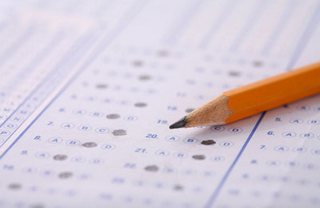Table of Contents
MCQs with Answers (FSc/ICS Part 1)
 In this one PDF, MCQs of all chapters of FSc/ICS Part1 are given. There are seven chapters. Answers of MCQs is starting from page 71.
In this one PDF, MCQs of all chapters of FSc/ICS Part1 are given. There are seven chapters. Answers of MCQs is starting from page 71.
SAMPLE MCQs
- $i^{13}=$………….
- (A) $i$
- (B) 1
- (C) -1
- (D) 2
- Set of all possible subsets of $S$ is called
- (A) Equivalent sets
- (B) Empty set
- (C) Power set
- (D) subset
- Cube root of unity are
- (A) $1, \omega, \omega^2$
- (B) $-1, \omega, \omega^2$
- (C) $-1, -\omega, -\omega^2$
- (D) $1, -1, 2$
- The equation $ax^2+bx+c=0$ will be quadratic if
- (A) $a=0, b\neq 0$
- (B) $a\neq 0$
- (C) $a=b=0$
- (D) $b=$ any real number
- An open sentence formed by using a sign of '=' is a/an
- (A) equation
- (B) formula
- (C) rational fraction
- (D) theorem
- An arrangement of the number according to some definite rule is called
- (A) sequence
- (B) combination
- (C) series
- (D) permutation
- The equation $ax^2+bx+c=0$ will be quadratic if
- (A) $a=0, b\neq 0$
- (B) $a\neq 0$
- (C) $a=b=0$
- (D) $b=$ any real number
- $n!=n(n-1)(n-2)...3\cdot 2\cdot 1$ defined only when $n$ is
- (A) positive integer
- (B) integer
- (C) real number
- (D) whole number
- If the angle of rotation is counter clockwise then angle is
- (A) negative
- (B) positive
- (C) non-negative
- (D) none of these
Download or View Online
<callout type=“success” icon=“fa fa-download”>
- Download PDF | <btn type=“primary” size=“xs” modal=“mwa”>View Online</btn>
<modal id=“mwa” size=“lg” title=“HSSC-I MCQs with Answers”> mcqs-math-fsc-part1.pdf
Download PDF ~ :fsc:fsc_part_1_mcqs:mcqs-math-fsc-part1.pdf </modal> </callout>